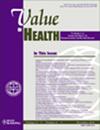Costs and Health Outcomes in Economic Evaluations of Person-Centered Care: A Systematic Review
IF 4.9
2区 医学
Q1 ECONOMICS
引用次数: 0
Abstract
Objectives
The aim was to explore the current evidence on the costs and cost-effectiveness of person-centered care (PCC). This includes exploring how results vary by populations, settings, and PCC operationalization.
Methods
PubMed, Scopus, CINAHL, and gray literature were systematically searched using terms related to PCC and economic evaluations. Selection of studies, extraction of data, and assessment of potential bias using a published checklist were conducted by 2 independent reviewers. Articles were included if indicating PCC as a partnership between carer and patient and reporting costs. Synthesis without meta-analysis was performed using categories based on PCC being either (1) cost-effective, (2) cost saving with negative health outcomes, (3) more costly but effective, or (4) more costly and less effective than usual care, respectively. Classification also considered adherence to the Gothenburg model for PCC cornerstones.
Results
Of 2802 articles identified, 44 articles (representing 40 studies) met the specified inclusion criteria. Studies were from the period 1986 to 2021, mostly from high-income countries, and targeting patients above 60 years with long-term condition or multiple comorbidities. Most studies found PCC to be dominating usual care (n = 26), cost-effective (n = 1), or cost saving (n = 3). Only 4 studies found PCC to be dominated by usual care. Limiting the analysis to the cornerstones listed in the Gothenburg model gave similar but limited results.
Conclusions
Although most studies found PCC to be cost-effective or cost saving, these findings have limited applicability for system-wide decision making because of significant variations in study methodologies and patient populations.
以人为本的医疗经济评估的成本和健康结果:系统回顾。
目的:目的是探讨当前证据的成本和成本效益的以人为本的护理(PCC)。这包括探索结果如何随人口、环境和PCC运作而变化。方法:系统地检索PubMed、Scopus、CINAHL和灰色文献,使用与PCC和经济评价相关的术语。研究选择、数据提取和潜在偏倚评估均由2名独立审稿人进行。将PCC作为护理人员和患者之间的伙伴关系以及报告成本的文章纳入。采用基于PCC的分类(1)成本效益,(2)成本节约但有负面健康结果,(3)成本更高但有效,或(4)比常规护理成本更高但效果较差进行综合,不进行荟萃分析。分类还考虑了PCC基石对哥德堡模型的依从性。结果:在2802篇文献中,44篇(代表40项研究)符合指定的纳入标准。研究时间为1986年至2021年,主要来自高收入国家,针对60岁以上有长期疾病或多重合并症的患者。大多数研究发现PCC在常规护理中占主导地位(n = 26),具有成本效益(n = 1)或节省成本(n = 3)。只有4项研究发现PCC以常规护理为主。将分析限制在哥德堡模型中列出的基石上,得出了类似但有限的结果。结论:尽管大多数研究发现PCC具有成本效益或节省成本,但由于研究方法和患者群体的显著差异,这些发现在全系统决策中的适用性有限。
本文章由计算机程序翻译,如有差异,请以英文原文为准。
求助全文
约1分钟内获得全文
求助全文
来源期刊

Value in Health
医学-卫生保健
CiteScore
6.90
自引率
6.70%
发文量
3064
审稿时长
3-8 weeks
期刊介绍:
Value in Health contains original research articles for pharmacoeconomics, health economics, and outcomes research (clinical, economic, and patient-reported outcomes/preference-based research), as well as conceptual and health policy articles that provide valuable information for health care decision-makers as well as the research community. As the official journal of ISPOR, Value in Health provides a forum for researchers, as well as health care decision-makers to translate outcomes research into health care decisions.
 求助内容:
求助内容: 应助结果提醒方式:
应助结果提醒方式:


